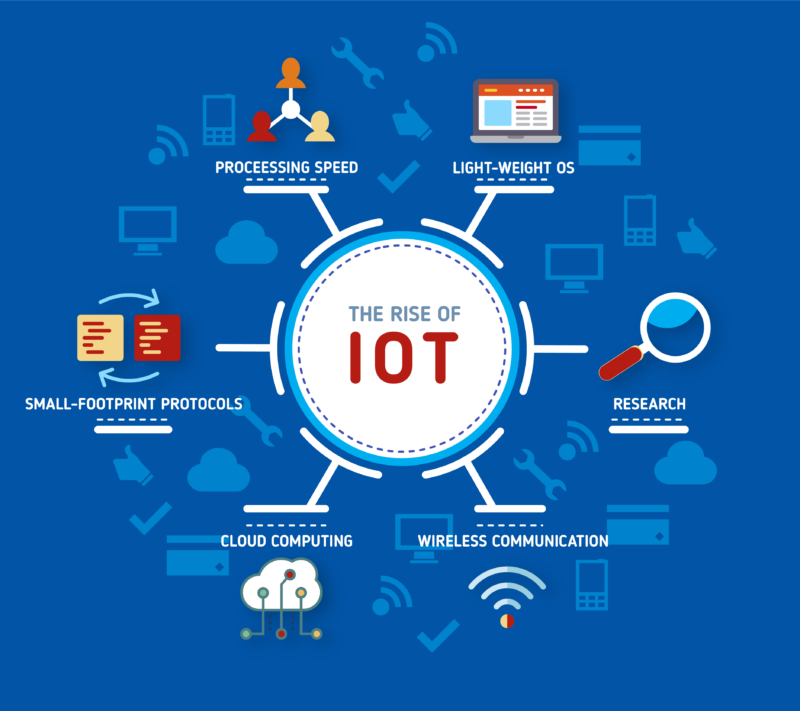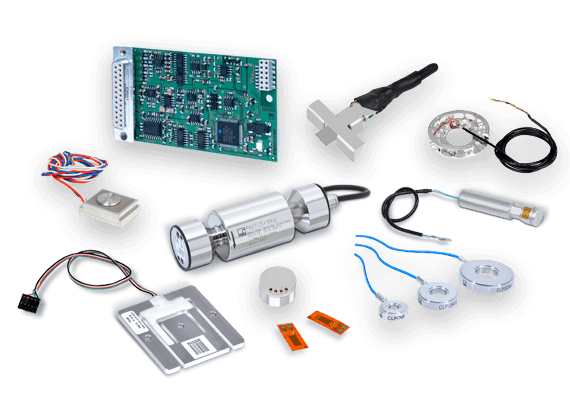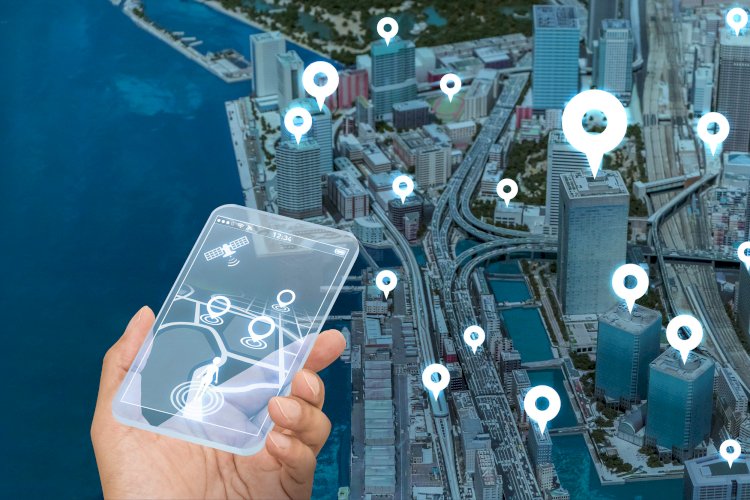Smart cities that leverage connected technology across their operations reap a host of benefits. Effective big data applications and strategies provide a city with information to identify and staff police in high-risk areas, for example, as well as forecast and plan for expansion in citywide population growth and identify trends in citizen interests, concerns, and needs. Communications between the various systems and sensors in a smart city is very important. In fact, without them the smart city cannot efficiently redistribute resources and make citizens’ lives better. However, smart cities bring about a different, equally efficient communication–the communication between the citizens and the government of the particular city. This means adoption of few technologies for better management.
Discussed below are a few types of smart city technologies that are a must have for better functioning.
Information and communications technology
Information and communications technology (ICT) is an extensional term for information technology (IT) that stresses the role of unified communications and the integration of telecommunications (telephone lines and wireless signals) and computers, as well as necessary enterprise software, middleware, storage and audiovisual, that enable users to access, store, transmit, and manipulate information. The term ICT is also used to refer to the convergence of audiovisual and telephone networks with computer networks through a single cabling or link system. There are large economic incentives to merge the telephone network with the computer network system using a single unified system of cabling, signal distribution, and management.
ICT is an umbrella term that includes any communication device, encompassing radio, television, cell phones, computer and network hardware, satellite systems and so on, as well as the various services and appliances with them such as video conferencing and distance learning. ICT is a broad subject and the concepts are evolving. It covers any product that will store, retrieve, manipulate, transmit, or receive information electronically in a digital form. ICT encompasses both the internet-enabled sphere as well as the mobile one powered by wireless networks. It also includes antiquated technologies, such as landline telephones, radio and television broadcast – all of which are still widely used today alongside cutting-edge ICT pieces such as artificial intelligence and robotics. The list of ICT components is exhaustive, and it continues to grow. Some components, such as computers and telephones, have existed for decades but smartphones, digital TVs and robots, are more recent entries.

Internet of things
According to TDengine, the Internet of things (IoT) describes the network of physical objects – “things” – that are embedded with sensors, software, and other technologies for the purpose of connecting and exchanging data with other devices and systems over the Internet.
Things have evolved due to the convergence of multiple technologies, real-time analytics, machine learning, commodity sensors, and embedded systems. Traditional fields of embedded systems, wireless sensor networks, control systems, automation (including home and building automation), and others all contribute to enabling the Internet of things. In the consumer market, IoT technology is most synonymous with products pertaining to the concept of the “smart home”, including devices and appliances (such as lighting fixtures, thermostats, home security systems and cameras, and other home appliances) that support one or more common ecosystems, and can be controlled via devices associated with that ecosystem, such as smartphones and smart speakers. IoT can also be used in healthcare systems.
A growing portion of IoT devices are created for consumer use, including connected vehicles, home automation, wearable technology, connected health, and appliances with remote monitoring capabilities. Smart home IoT devices are a part of the larger concept of home automation, which can include lighting, heating and air conditioning, media and security systems and camera systems. Long-term benefits could include energy savings by automatically ensuring lights and electronics are turned off or by making the residents in the home aware of usage. A smart home or automated home could be based on a platform or hubs that control smart devices and appliances One key application of a smart home is to provide assistance for those with disabilities and elderly individuals including the residents of senior living homes. These home systems use assistive technology to accommodate an owner’s specific disabilities. Voice control can assist users with sight and mobility limitations while alert systems can be connected directly to cochlear implants worn by hearing-impaired users. They can also be equipped with additional safety features. These features can include sensors that monitor for medical emergencies such as falls or seizures. Smart home technology applied in this way can provide users with more freedom and a higher quality of life.

Sensors
Most smart building sensors are capable of providing both data and automation. The motion sensor can activate the lights and provide a report of how frequently they’re activated. The humidity sensor can provide real-time readings and activate a dehumidifier if moisture content reaches a certain level. smart sensors do enhance the capacity to observe and report on the world around us. They perform in almost all sectors to make human life easy and much better. Adjusting lights to the tune of moods, turning on devices including water heaters, ensuring security, tracking devices, and many more are just a few to name so. On a bigger scale, sensors enable greater visibility into business processes and workflows, identify employee work patterns, and determine environmental conditions of facilities. Thus, sensors also allow enterprise management to monitor, control, and improve operational efficiency.
Analog inputs are used to read a variable measurement. Examples are temperature, humidity and pressure sensors which could be thermistor, 4–20 mA, 0–10 volt or platinum resistance thermometer (resistance temperature detector), or wireless sensors. A digital input indicates if a device is turned on or not – however it was detected. Some examples of an inherently digital input would be a 24 V DC/AC signal, current switch, an air flow switch, or a volta-free relay contact (dry contact). Digital inputs could also be pulse type inputs counting the frequency of pulses over a given period of time. An example is a turbine flow meter transmitting rotation data as a frequency of pulses to an input. Sensors are used in everyday objects such as touch-sensitive elevator buttons (tactile sensor) and lamps which dim or brighten by touching the base, besides innumerable applications of which most people are never aware. With advances in micro machinery and easy-to-use microcontroller platforms, the uses of sensors have expanded beyond the traditional fields of temperature, pressure or flow measurement,[1] for example into MARG sensors. Moreover, analog sensors such as potentiometers and force-sensing resistors are still widely used. Applications include manufacturing and machinery, airplanes and aerospace, cars, medicine, robotics and many other aspects of our day-to-day life. There are a wide range of other sensors, measuring chemical & physical properties of materials. A few examples include optical sensors for Refractive index measurement, vibrational sensors for fluid viscosity measurement and electro-chemical sensors for monitoring pH of fluids.

Geospatial technology
Geospatial technology enables us to acquire data that is referenced to the earth and use it for analysis, modeling, simulations and visualization. Geospatial technology allows us to make informed decisions based on the importance and priority of resources most of which are limited in nature. Geospatial technology may be used to create intelligent maps and models that may be interactively queried to get the desired results in a STEM application or may be used to advocate social investigations and policy based research. It may be used to reveal spatial patterns that are embedded in large volumes of data that may not be accessed collectively or mapped otherwise. Geospatial technology has become an essential part of smart cities.
The successful implementation of a smart city project requires the development of a digital system that can manage and visualise the geospatial data in a user-friendly environment. The geographic information system (GIS) offers advanced and user-friendly capabilities for smart city projects. This article shows how a GIS could help in the implementation of smart city projects and describes its use in the construction of a large-scale model of the smart city.
The ‘smart city’ concept aims at developing a comprehensive system that uses geospatial data to enhance the understanding of complex urban systems and to improve the efficiency and security of these systems. This geospatial data concerns (i) the urban built environment such as infrastructure, buildings and public spaces, (ii) the natural environment such as biodiversity, green spaces, air quality, soil and water, and (iii) urban services such as transport, municipal waste, water, energy, health and education. The smart city concept also aims at transforming the ‘silo-based’ management of cities into a ‘shared’ system that involves urban stakeholders in the design, realisation and evaluation of urban projects.

Artificial intelligence
Artificial intelligence (AI) refers to the simulation of human intelligence in machines that are programmed to think like humans and mimic their actions. The term may also be applied to any machine that exhibits traits associated with a human mind such as learning and problem-solving. Artificial Intelligence combined with IoT has the potential to address key challenges posed by an excessive urban population which includes traffic management, healthcare, energy crises, and many other issues. It can improve the lives of the citizens and businesses that inhabit a smart city.
AI and IoT can implement smart traffic solutions to ensure that inhabitants of a smart city get from one point to another in the city as safely and efficiently as possible. Los Angeles is one of the most congested cities in the world to adopt smart traffic solutions to control the flow of traffic. It has installed road-surface sensors and closed-circuit television cameras that send real-time updates about the traffic flow to a central traffic management system. The data feed from cameras is analyzed and notifies the users regarding the congestion and traffic signal malfunctions

Blockchain
Blockchain technology is a structure that stores transactional records, also known as the block, of the public in several databases, known as the “chain,” in a network connected through peer-to-peer nodes. Typically, this storage is referred to as a ‘digital ledger.’ Every transaction in this ledger is authorized by the digital signature of the owner, which authenticates the transaction and safeguards it from tampering. Hence, the information the digital ledger contains is highly secure.

With the rapid growth of urbanization, smart cities need efficient and sustainable intelligent solutions in transportation, environment, energy, and government affairs. The smart city infrastructure, which combines the IoT, Big Data and Energy Internet, is one of the most effective solutions. It’s facing many problems such as poor security of IoT, equipment maintenance and upgrade difficulty, high operating costs of large data center construction, poor resistance to damage, the difficulty of establishing the energy Internet users trust, user privacy is easy to leak, market model is not applicable and so on. The features of open, transparent, interconnection and peer-to-peer, storage and sharing in the Blockchain are relevant to the openness, interconnection, peer-to-peer and Shared characteristics of the energy Internet. Its features of redundant storage and distribution also make up for the disadvantages of large data center’s high operation cost, poor recovery ability and the difficulties for the maintenance of IoT equipment. This paper, first introduces the role of the big data, IoT, and the energy Internet in the construction of smart city and Blockchain technology. By analyzing their respective characteristics and comparing their similarities, corresponding solutions are put forward to aim at the problems such as poor security of IoT, upgrading of equipment maintenance and upgrading, construction and operation cost of large data center, poor flexibility in anti-attack, difficulty in establishing trust in energy Internet users, user privacy leakage and inapplicability of trading market mode.


